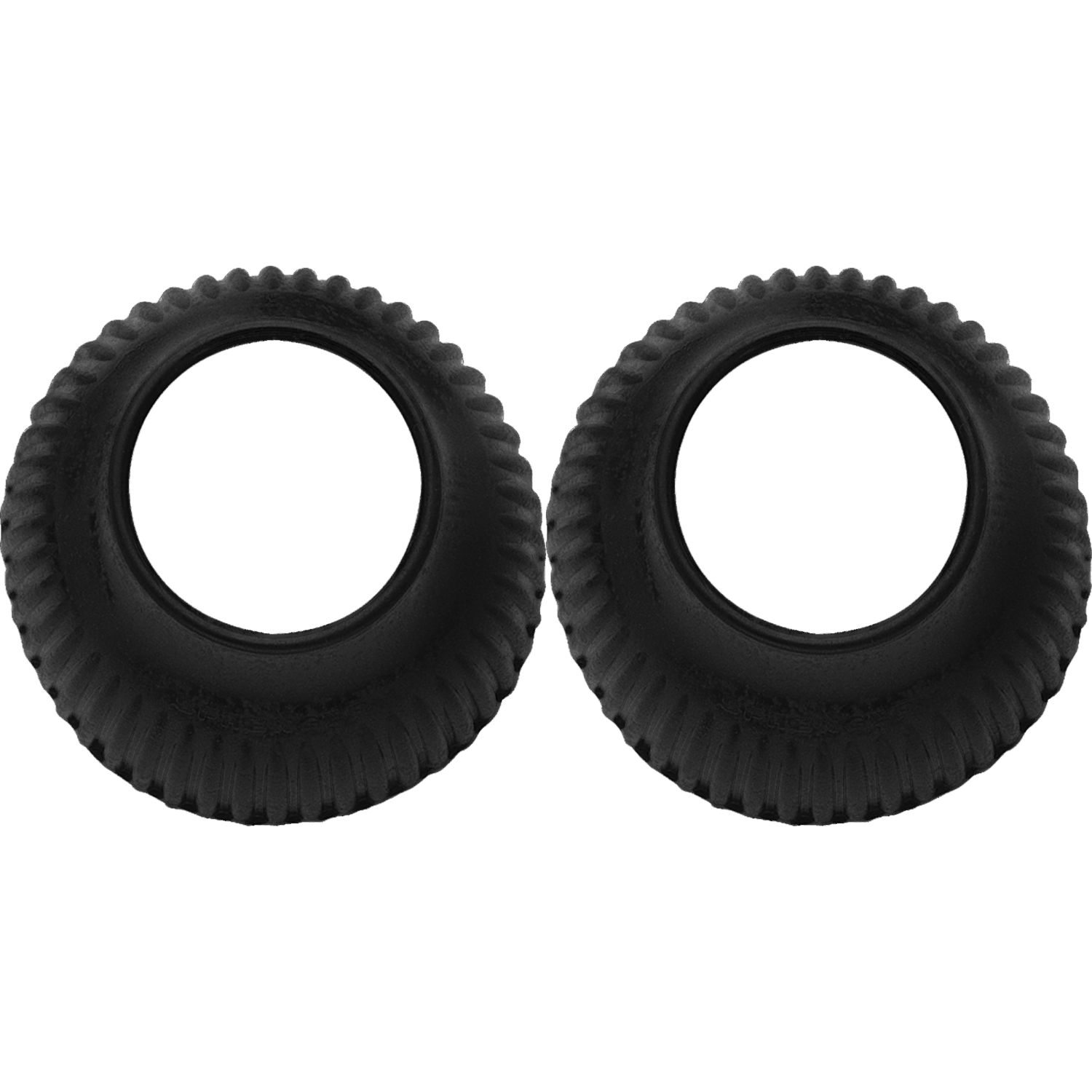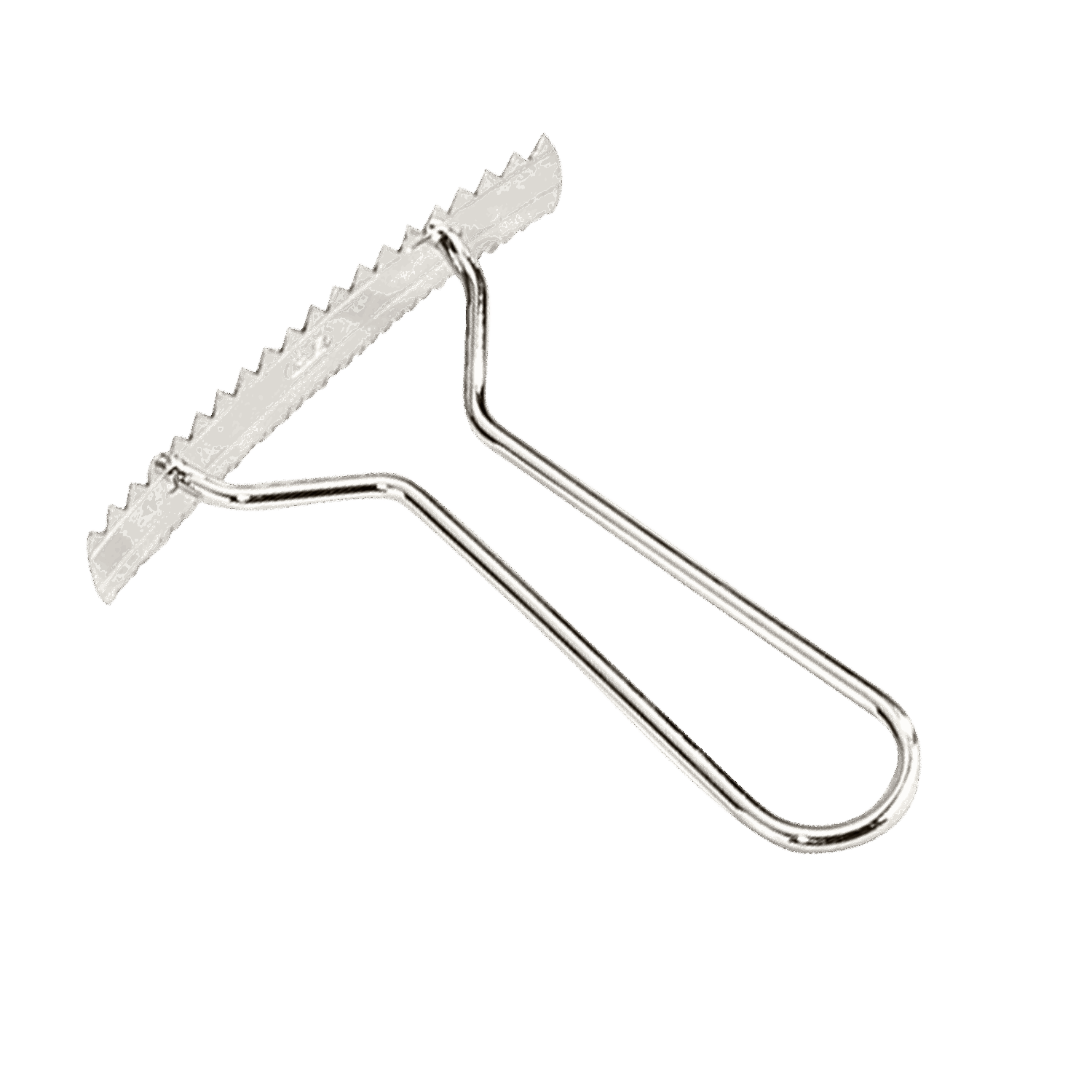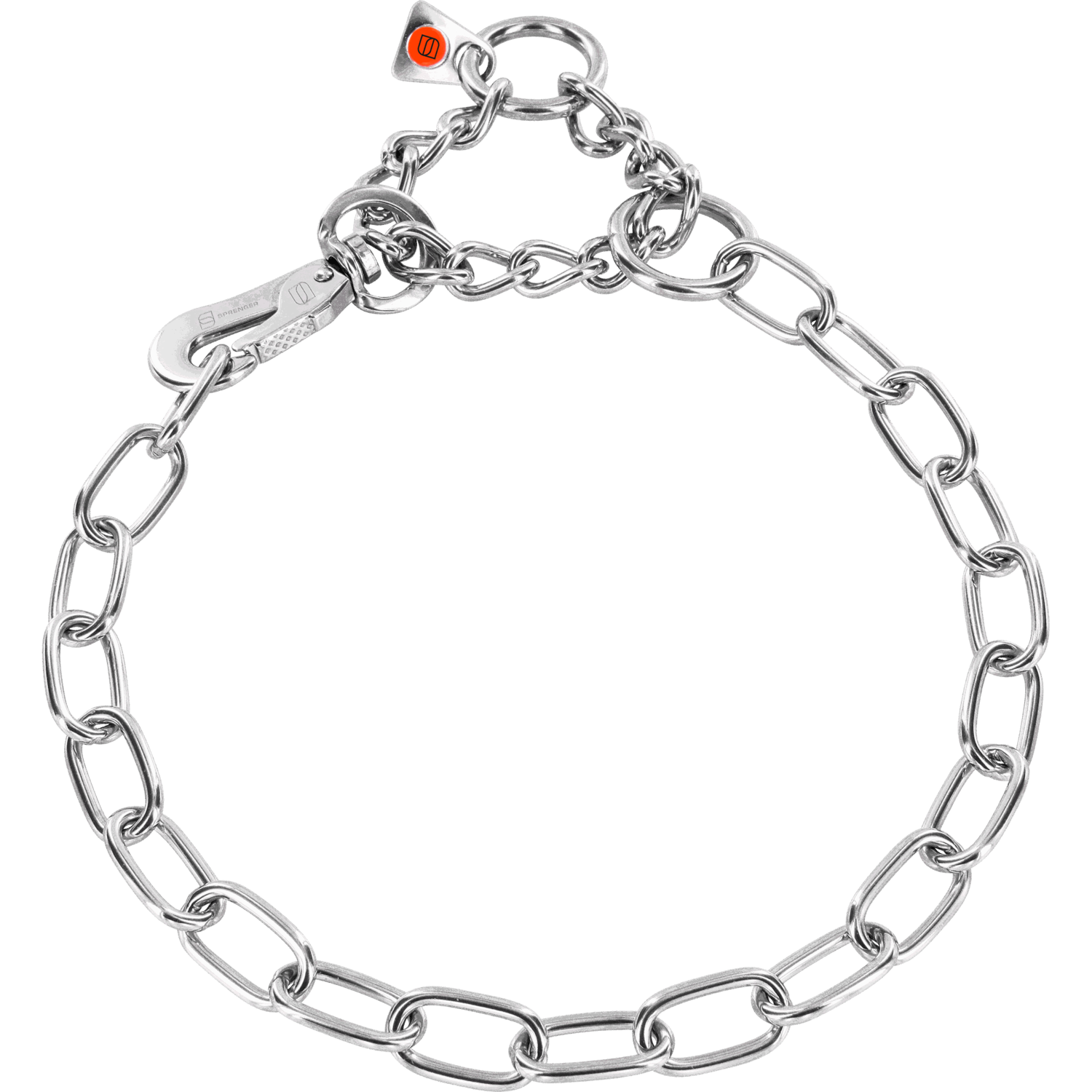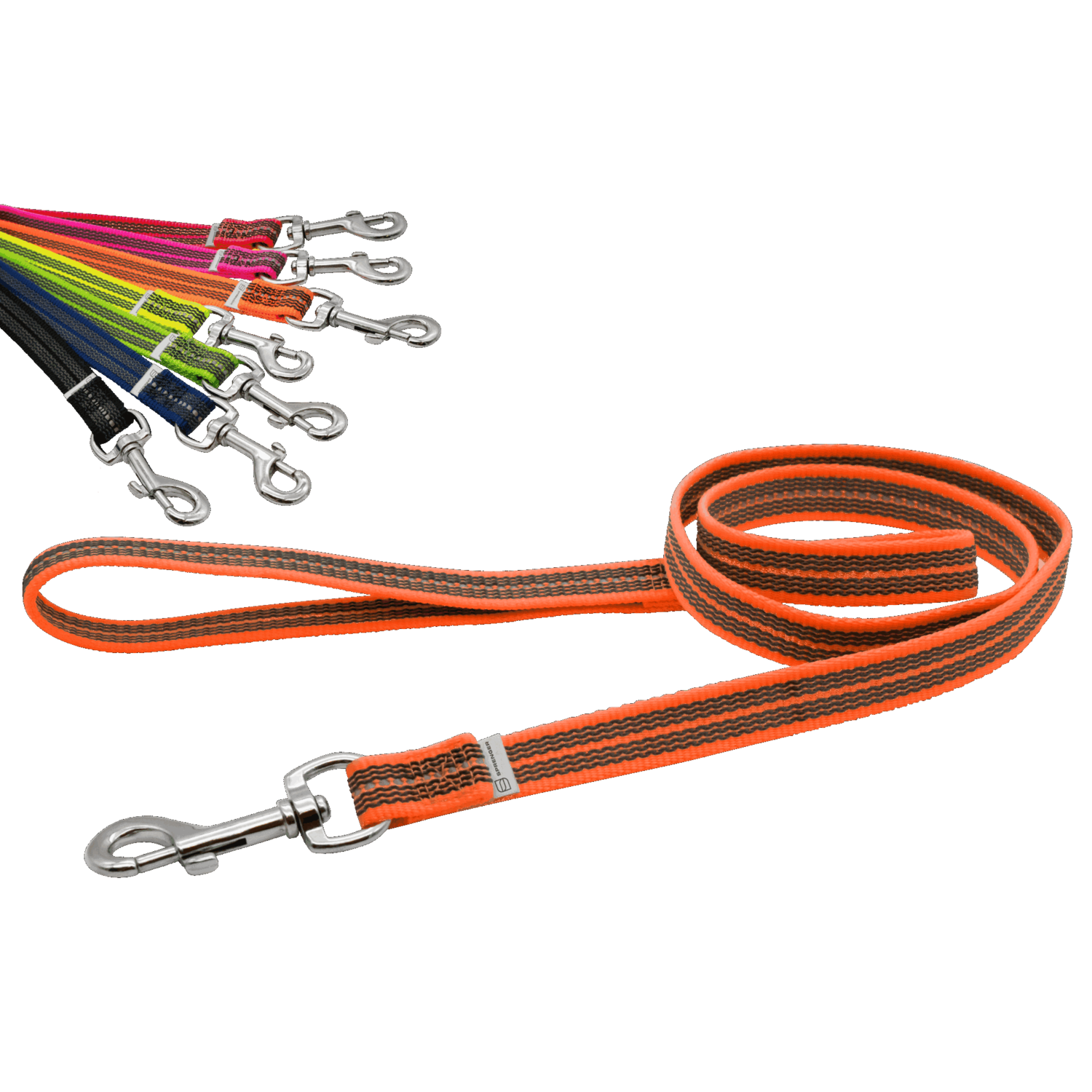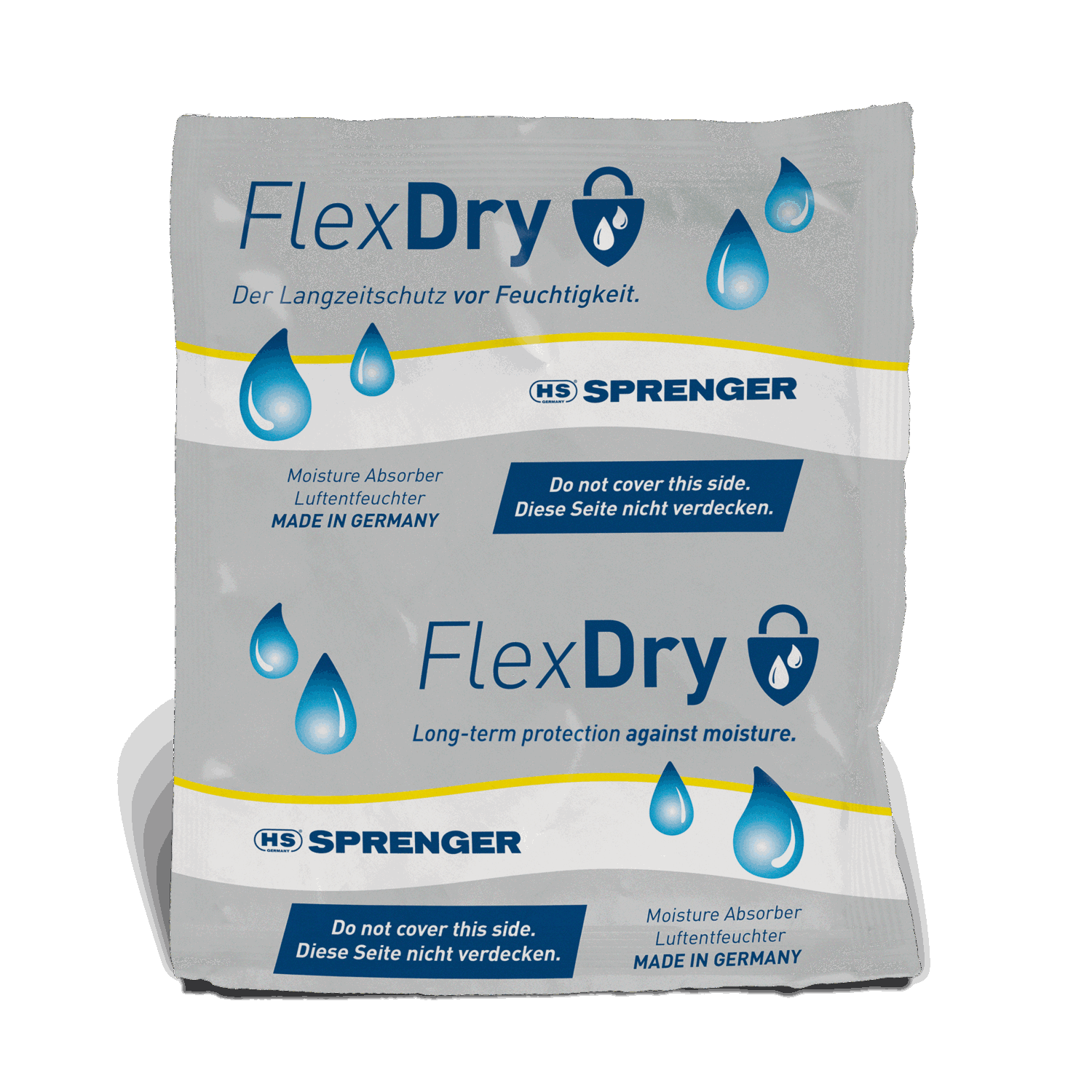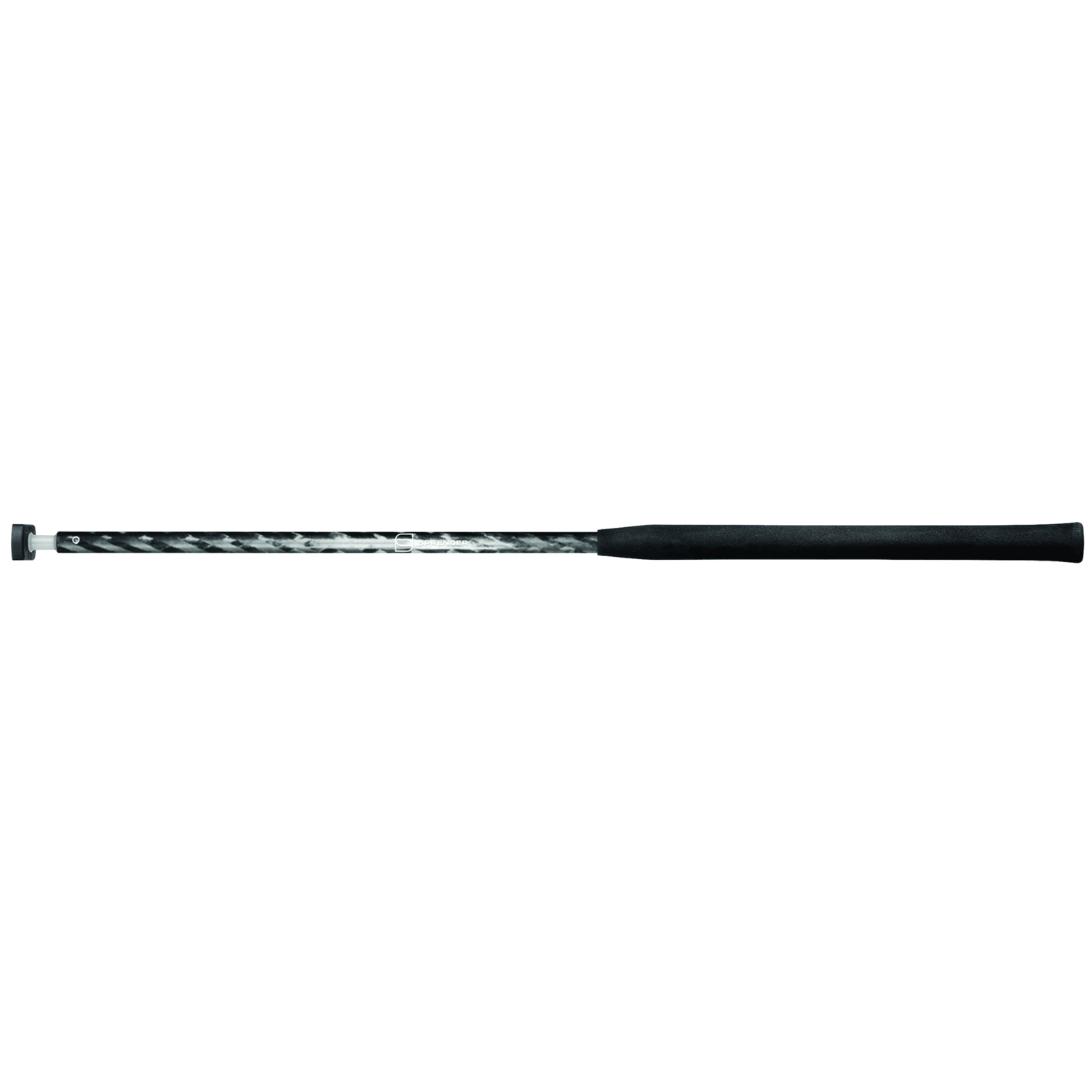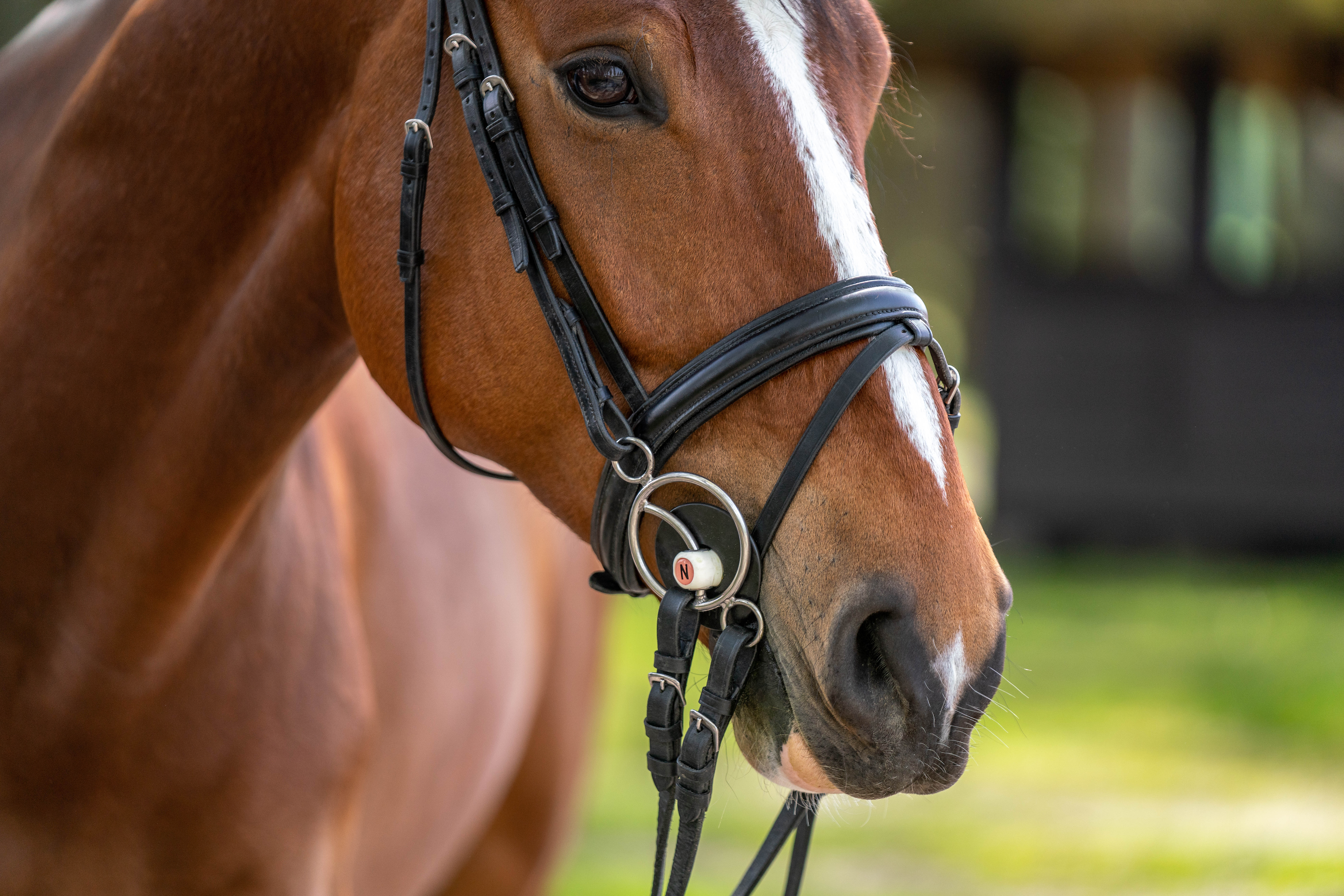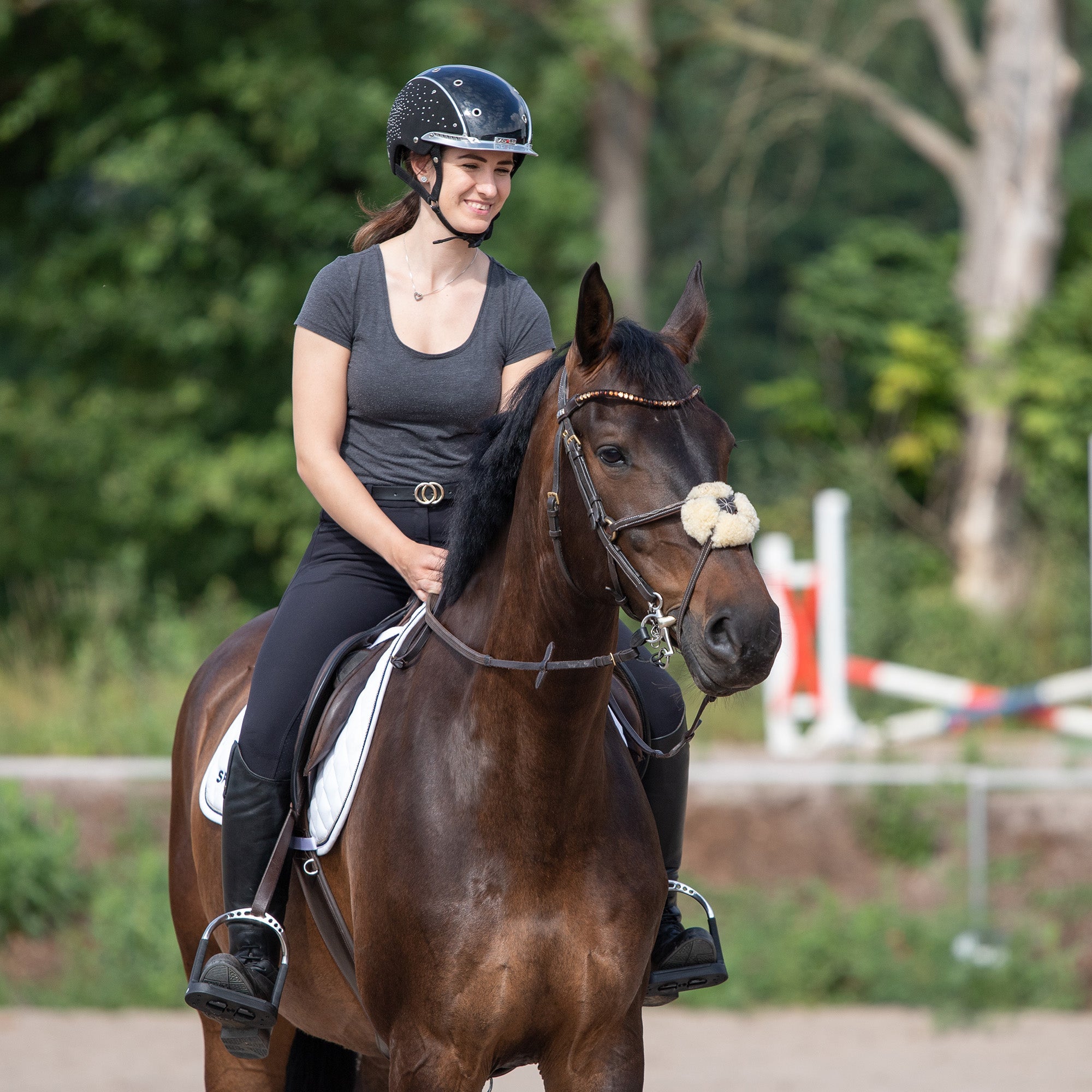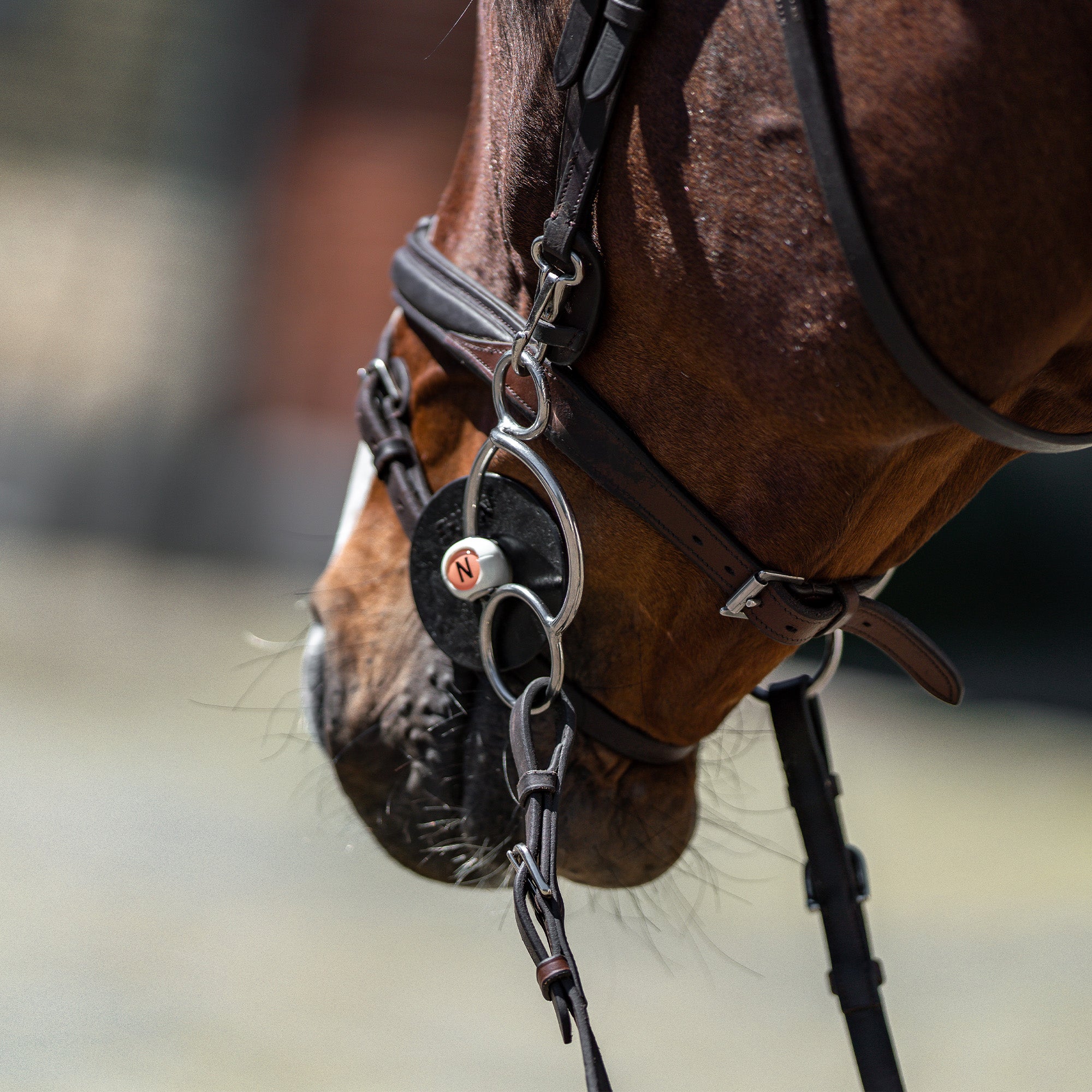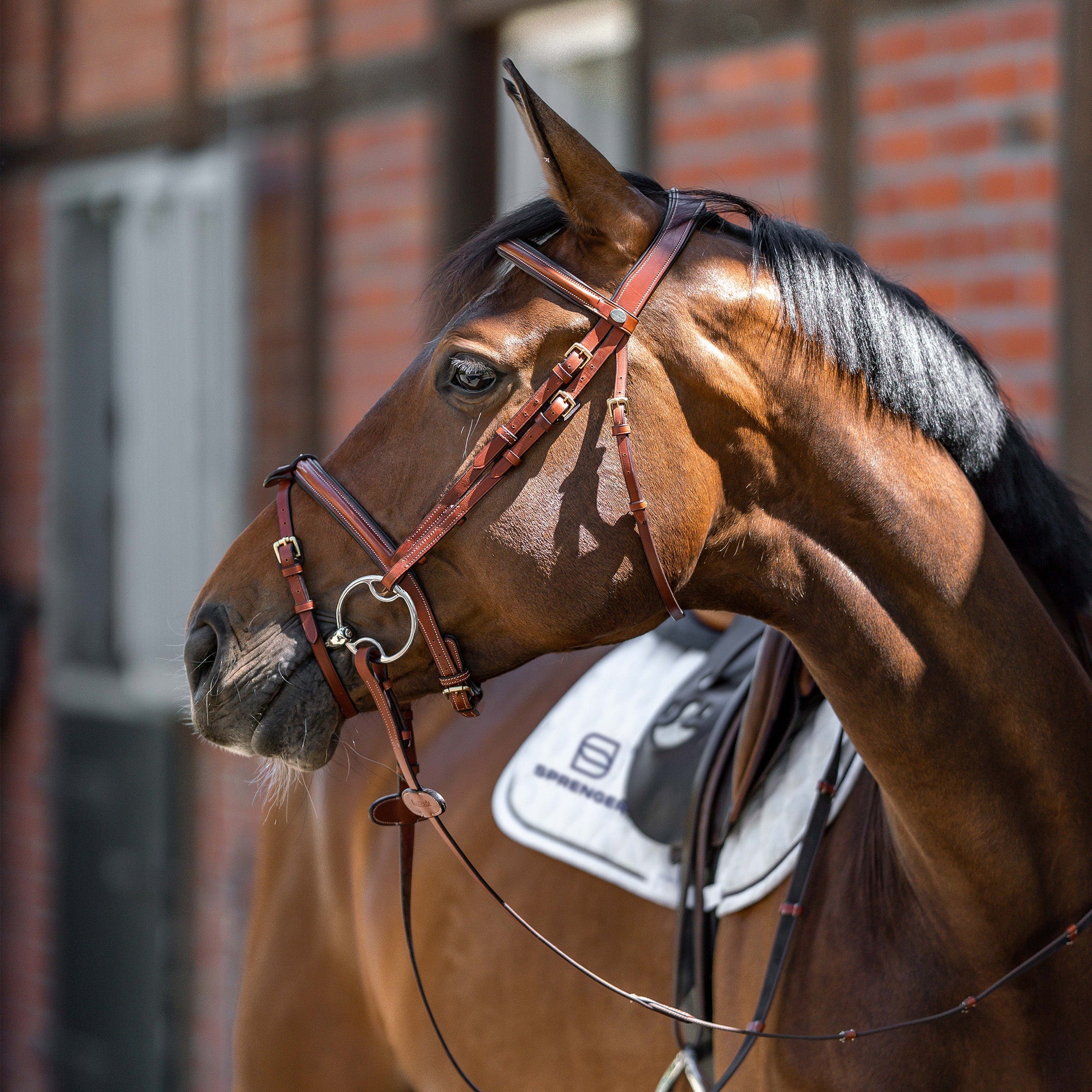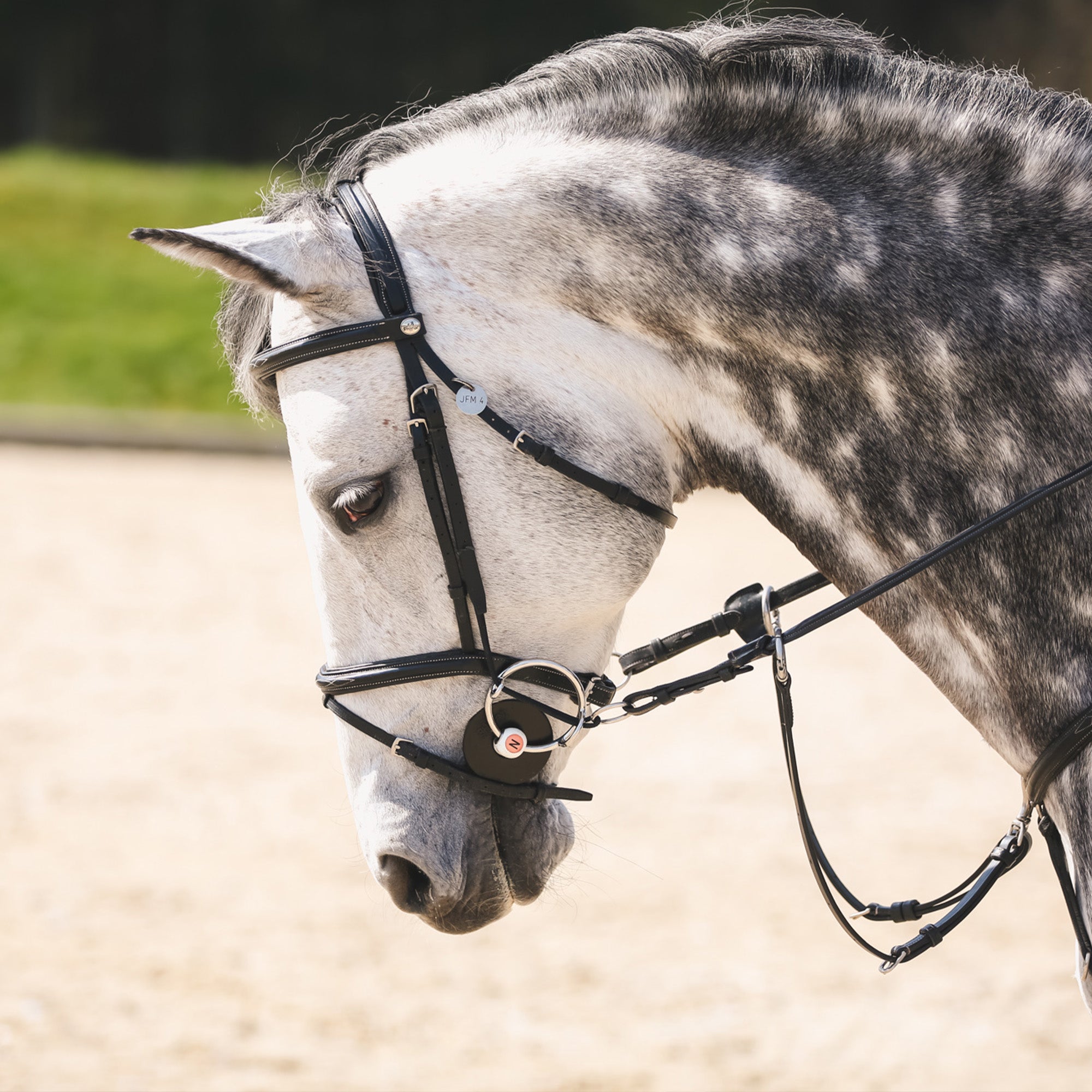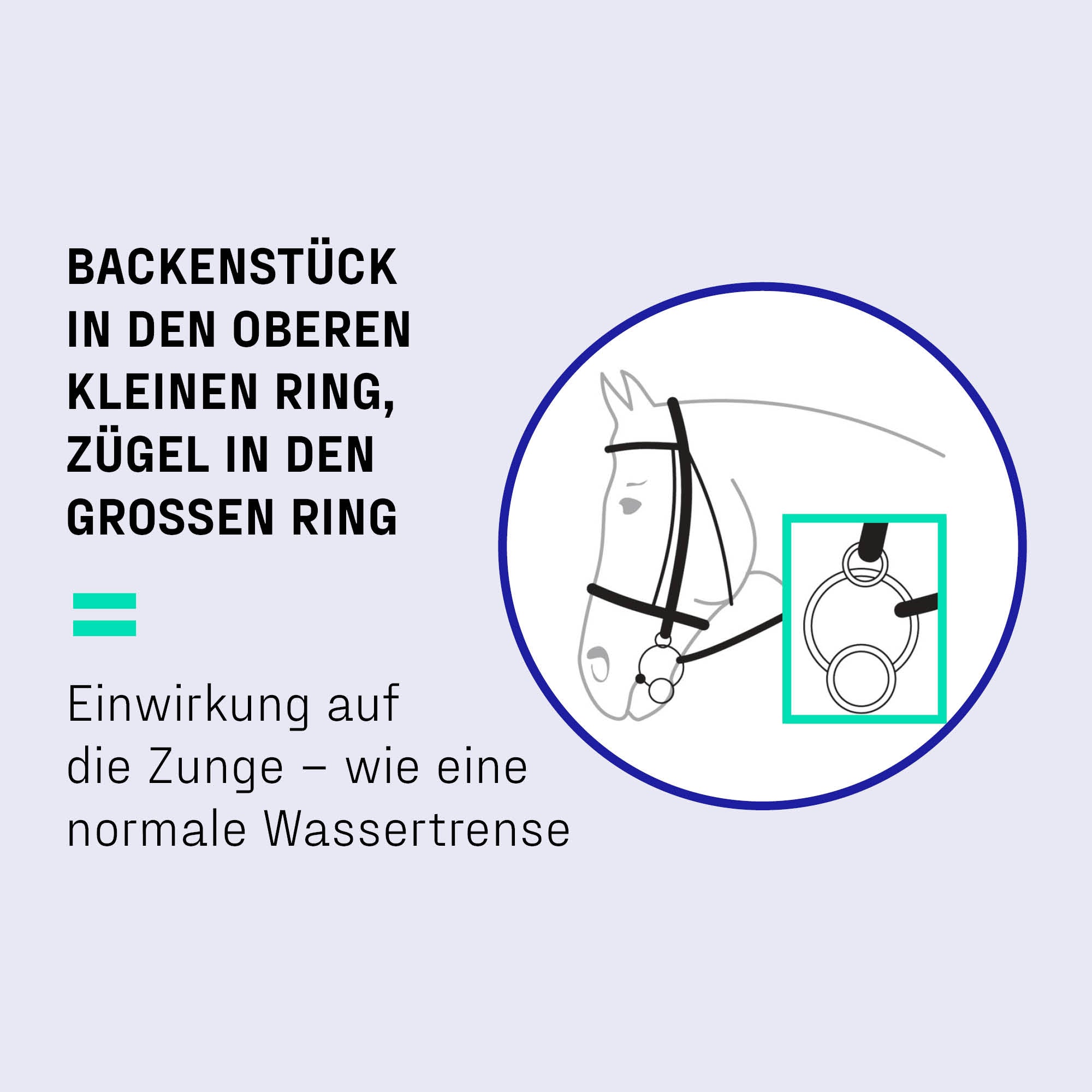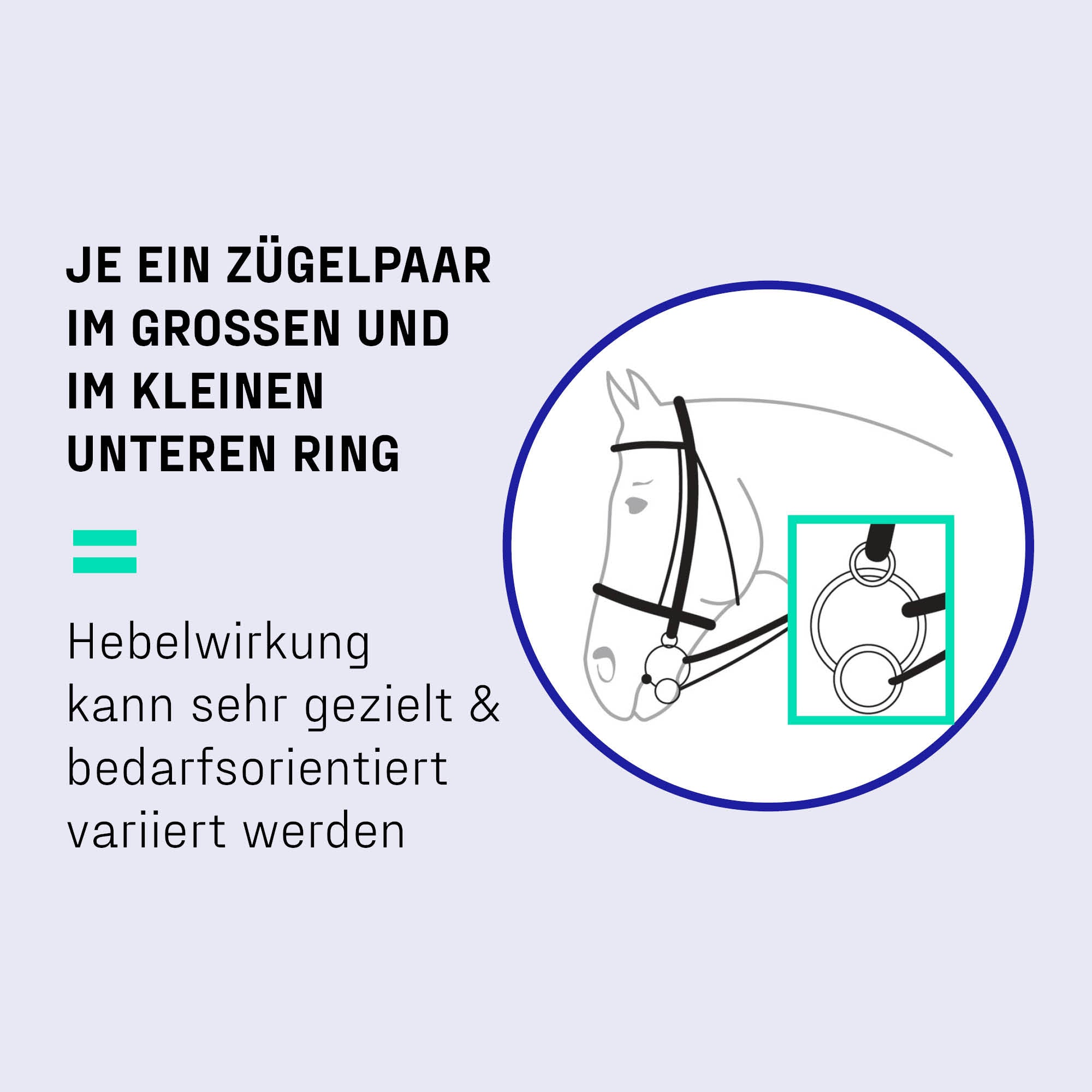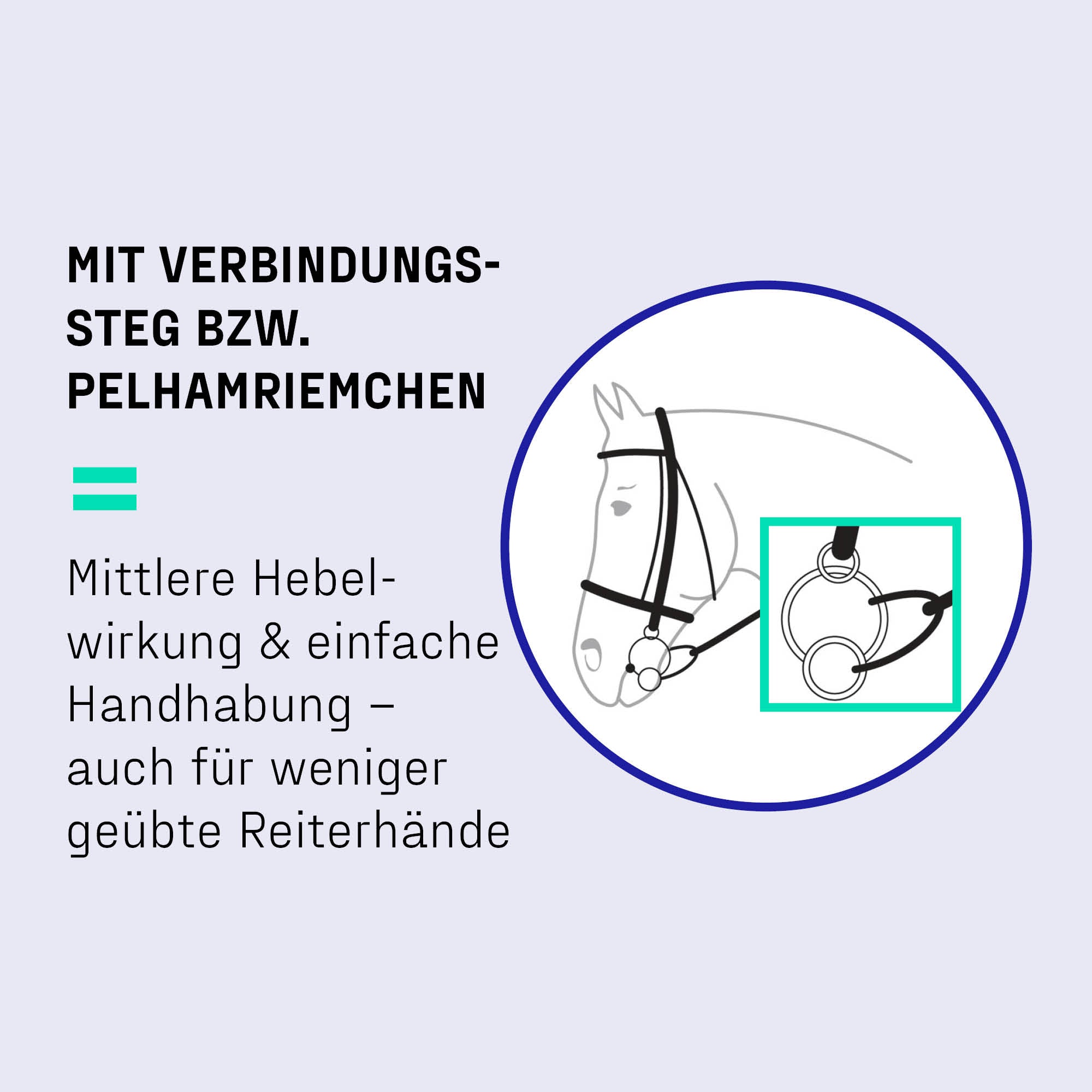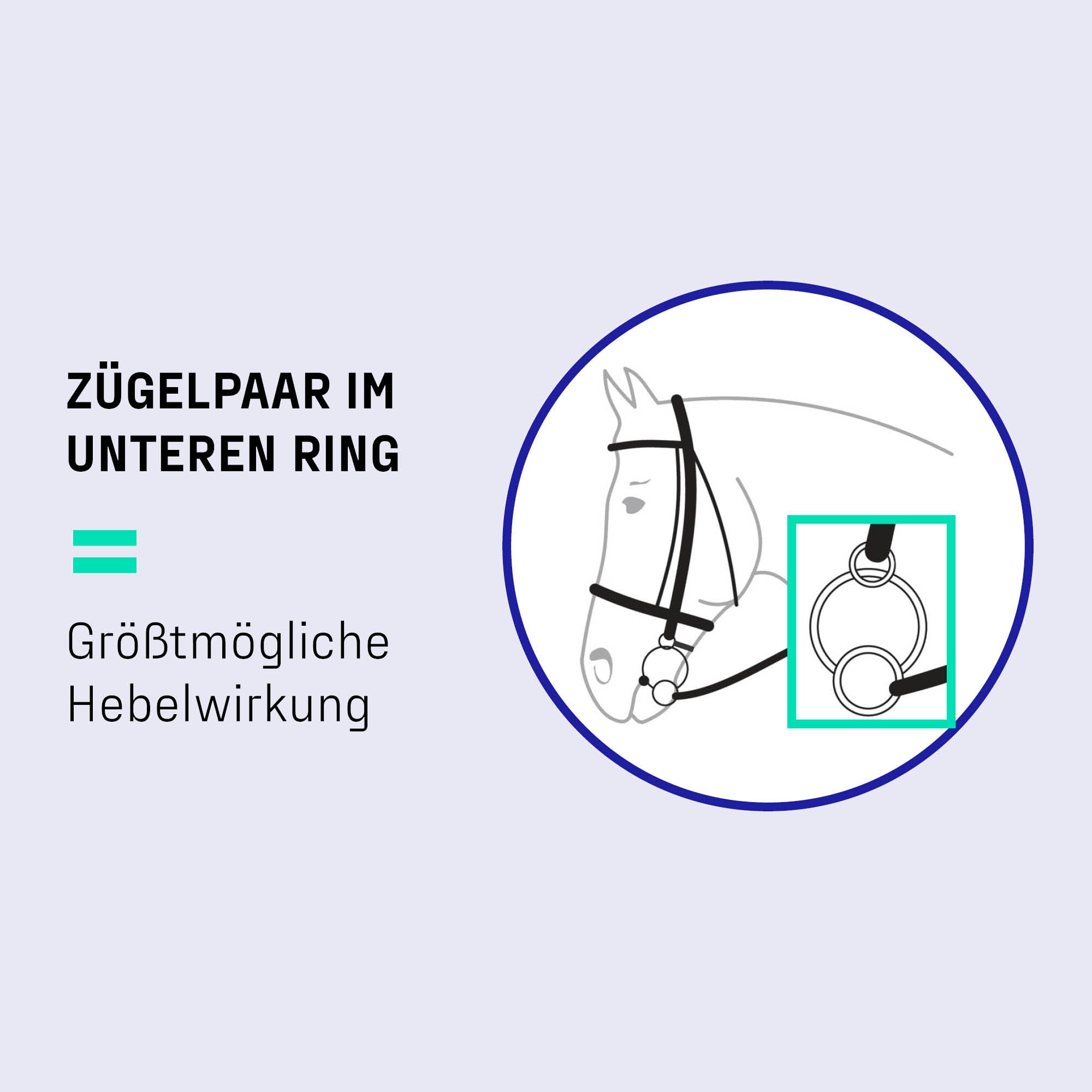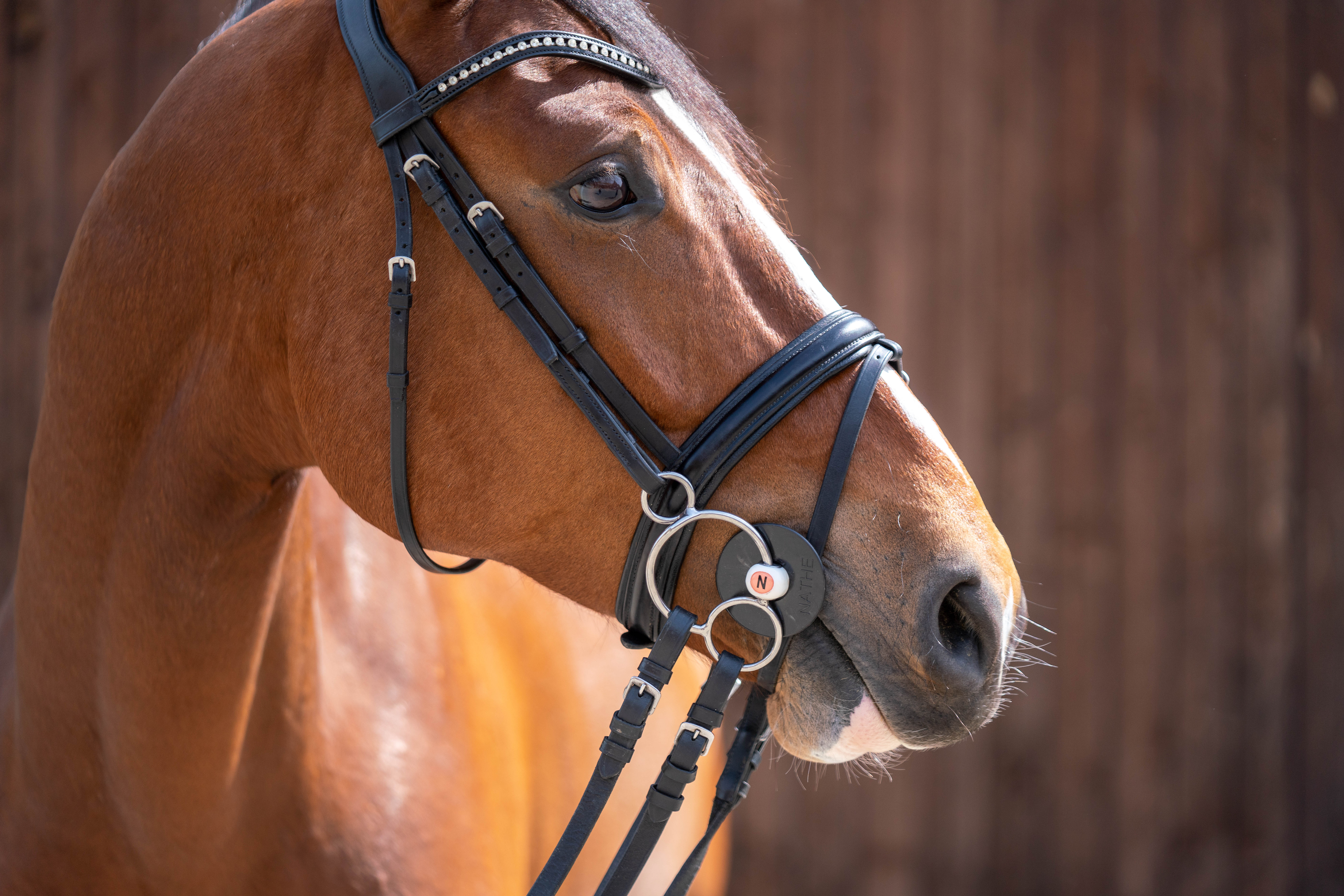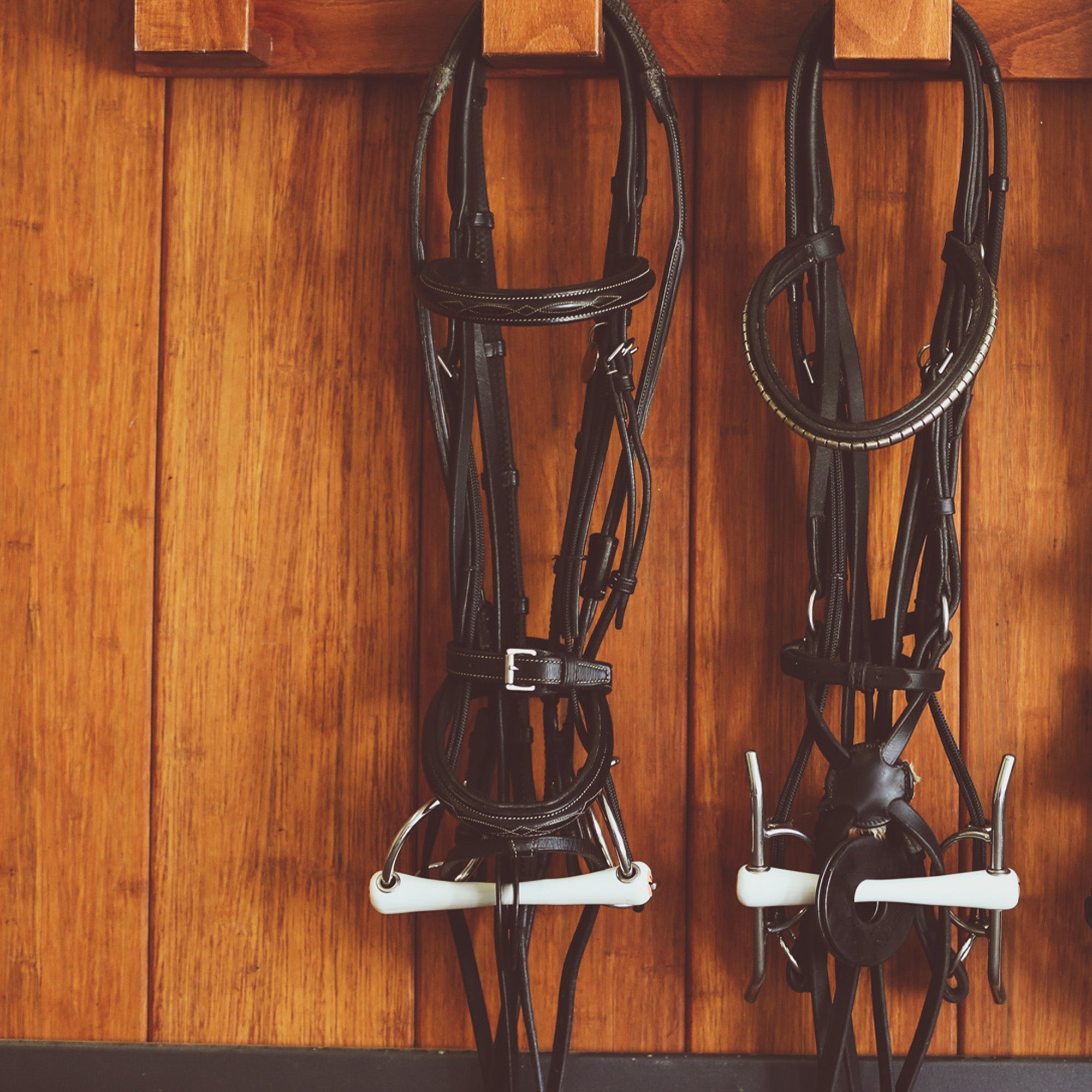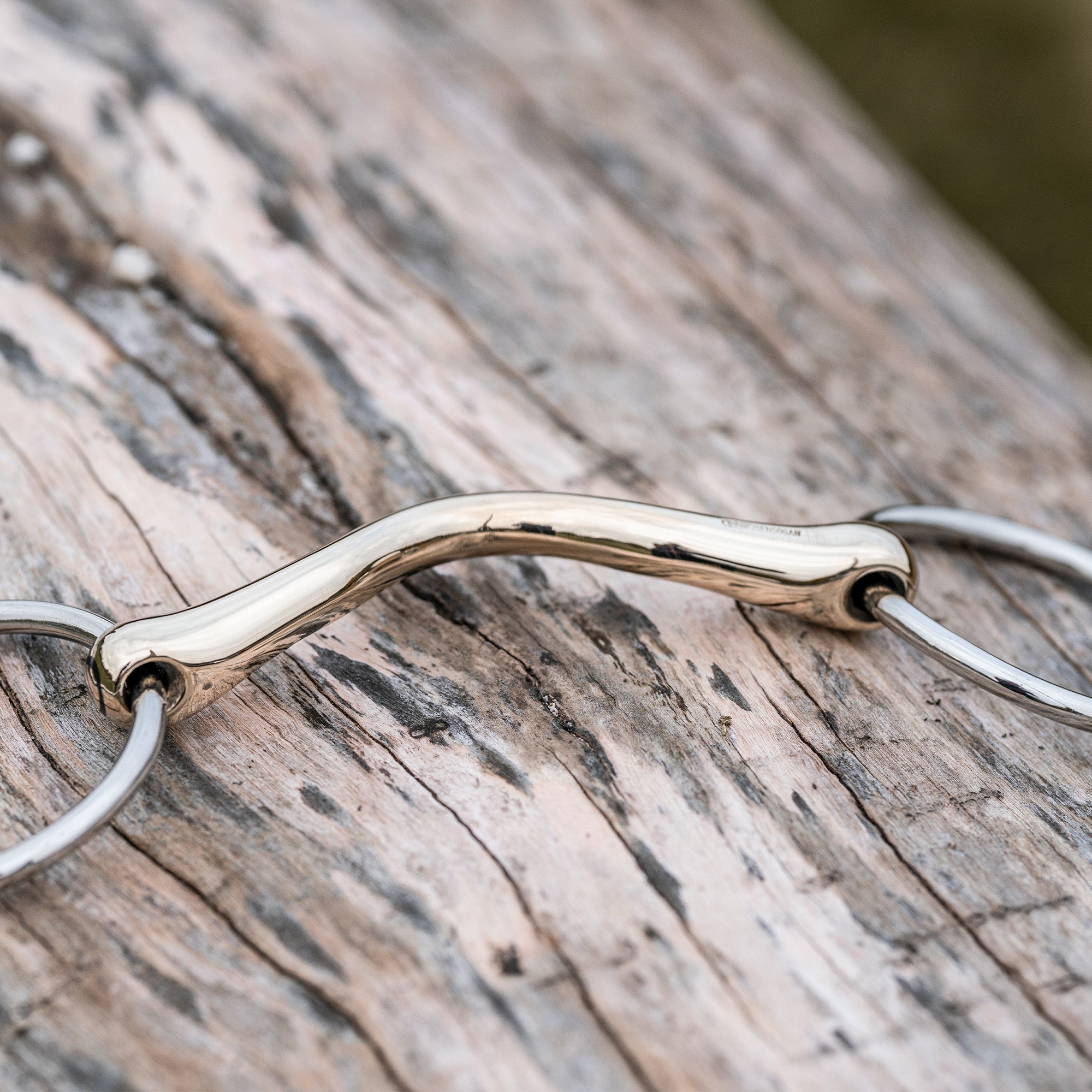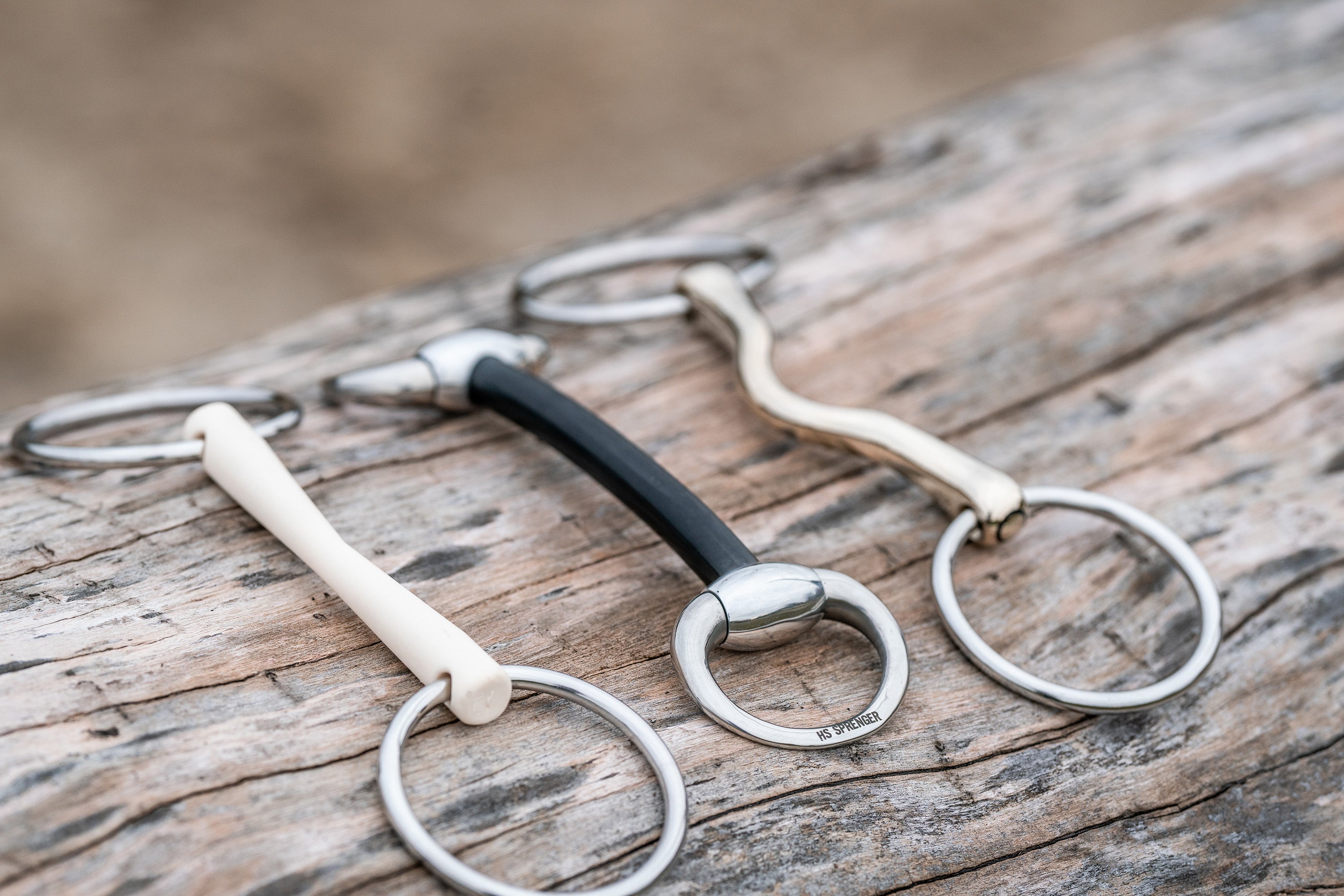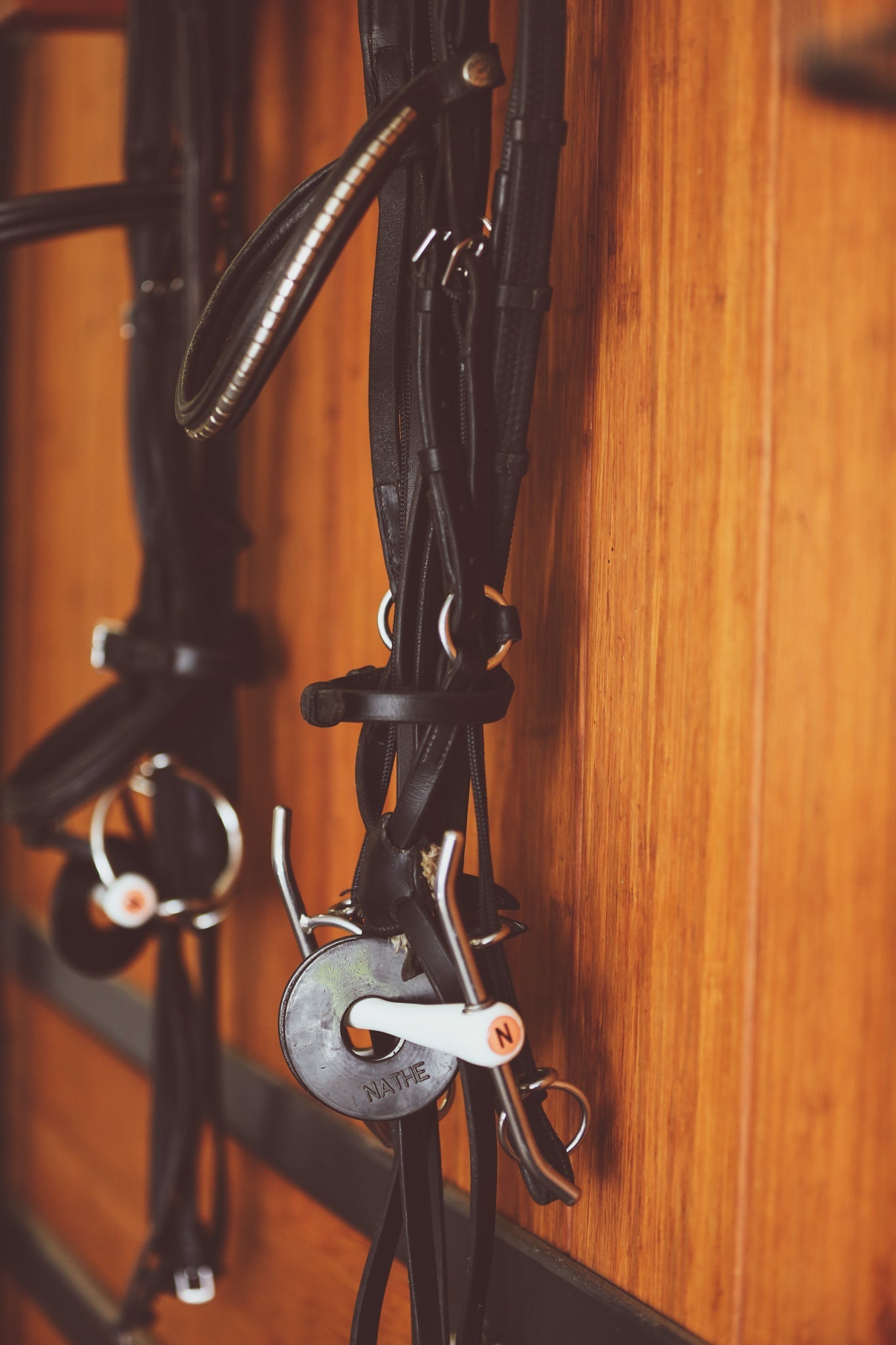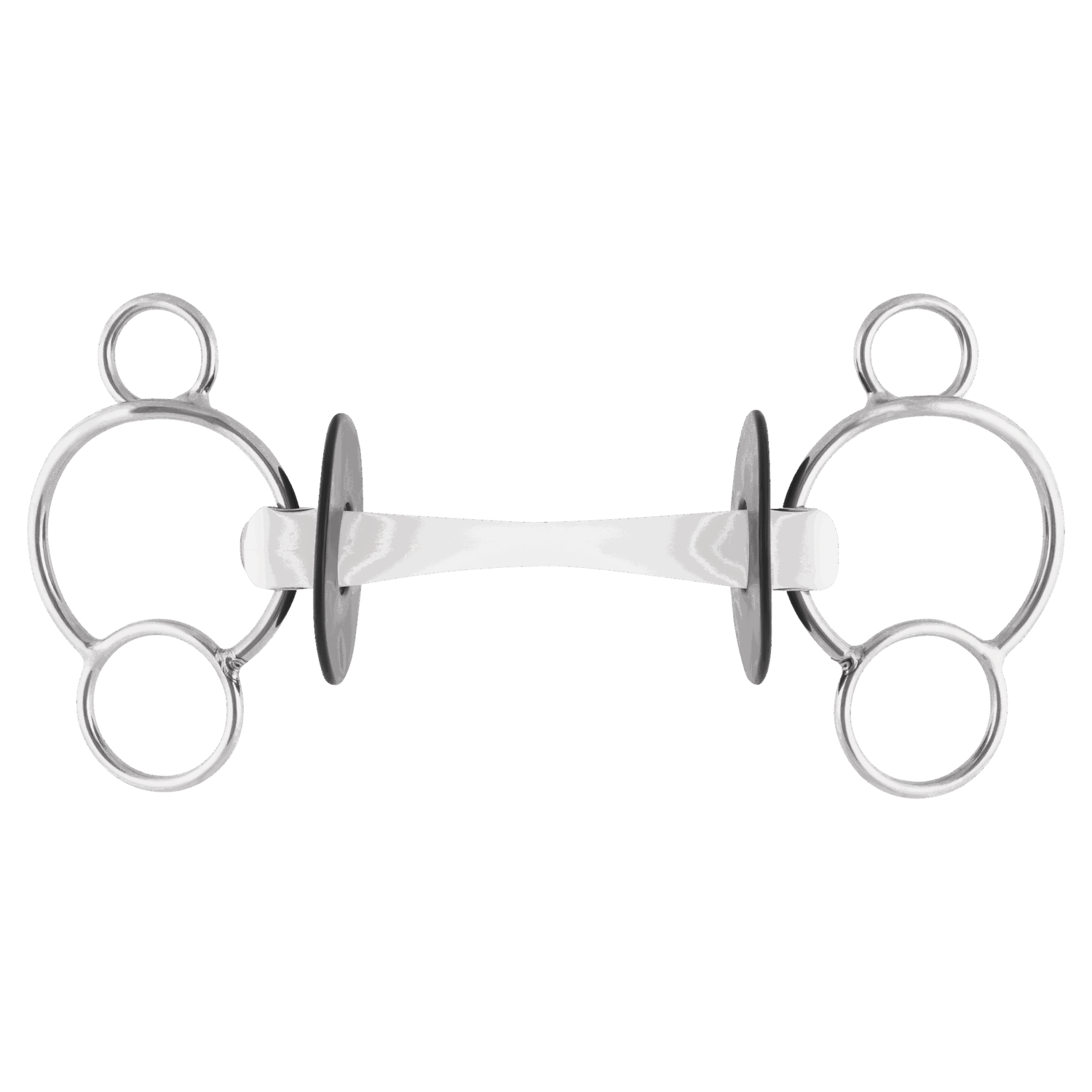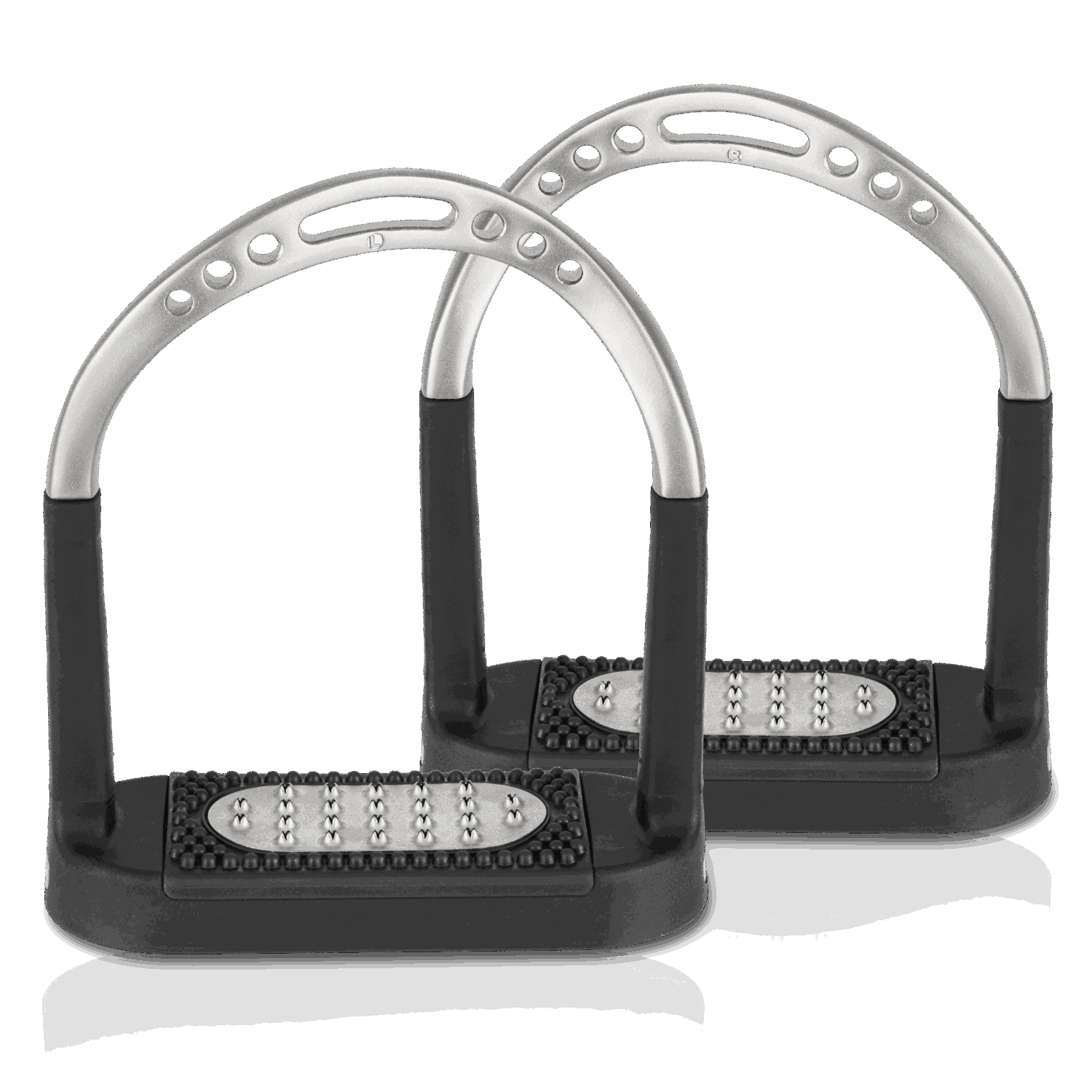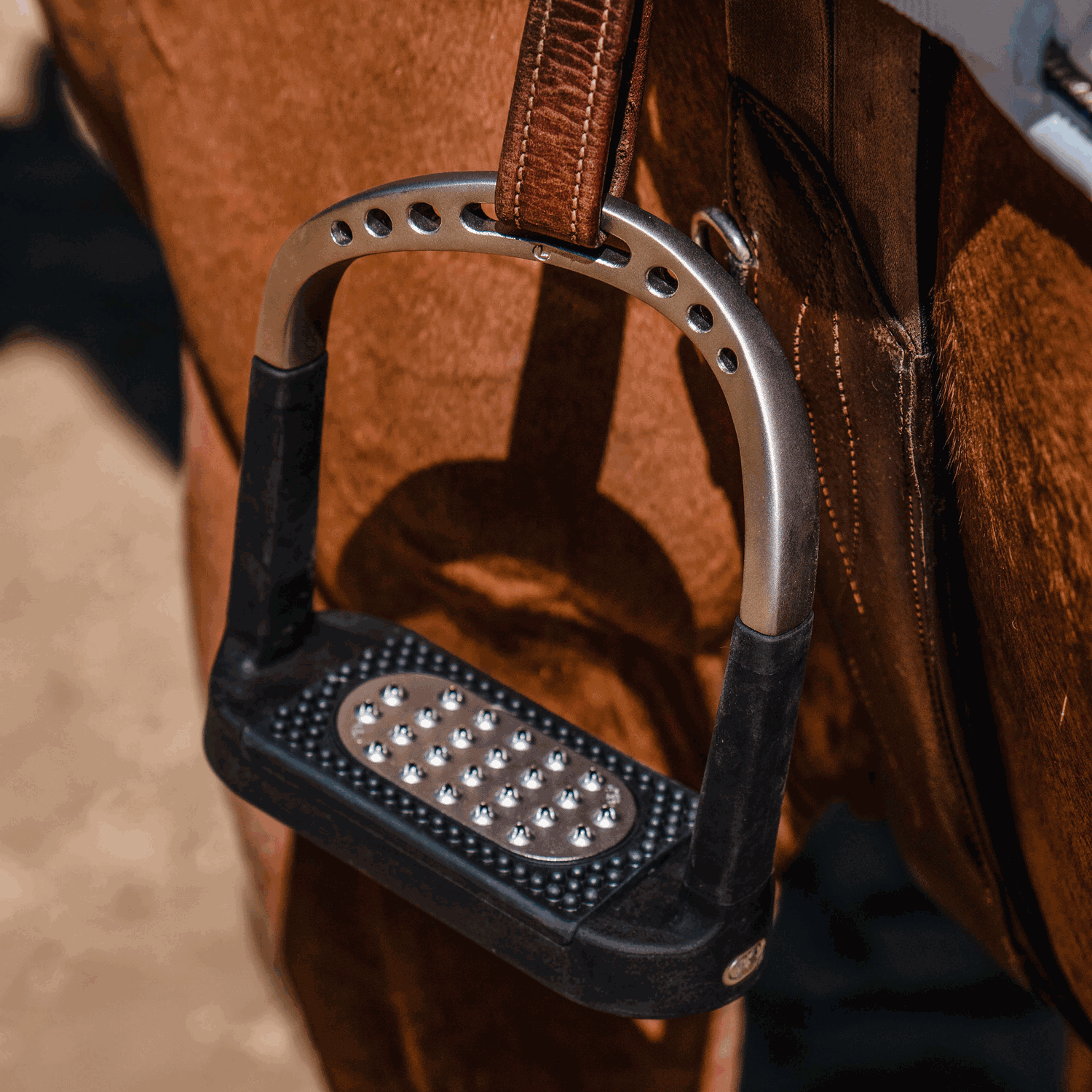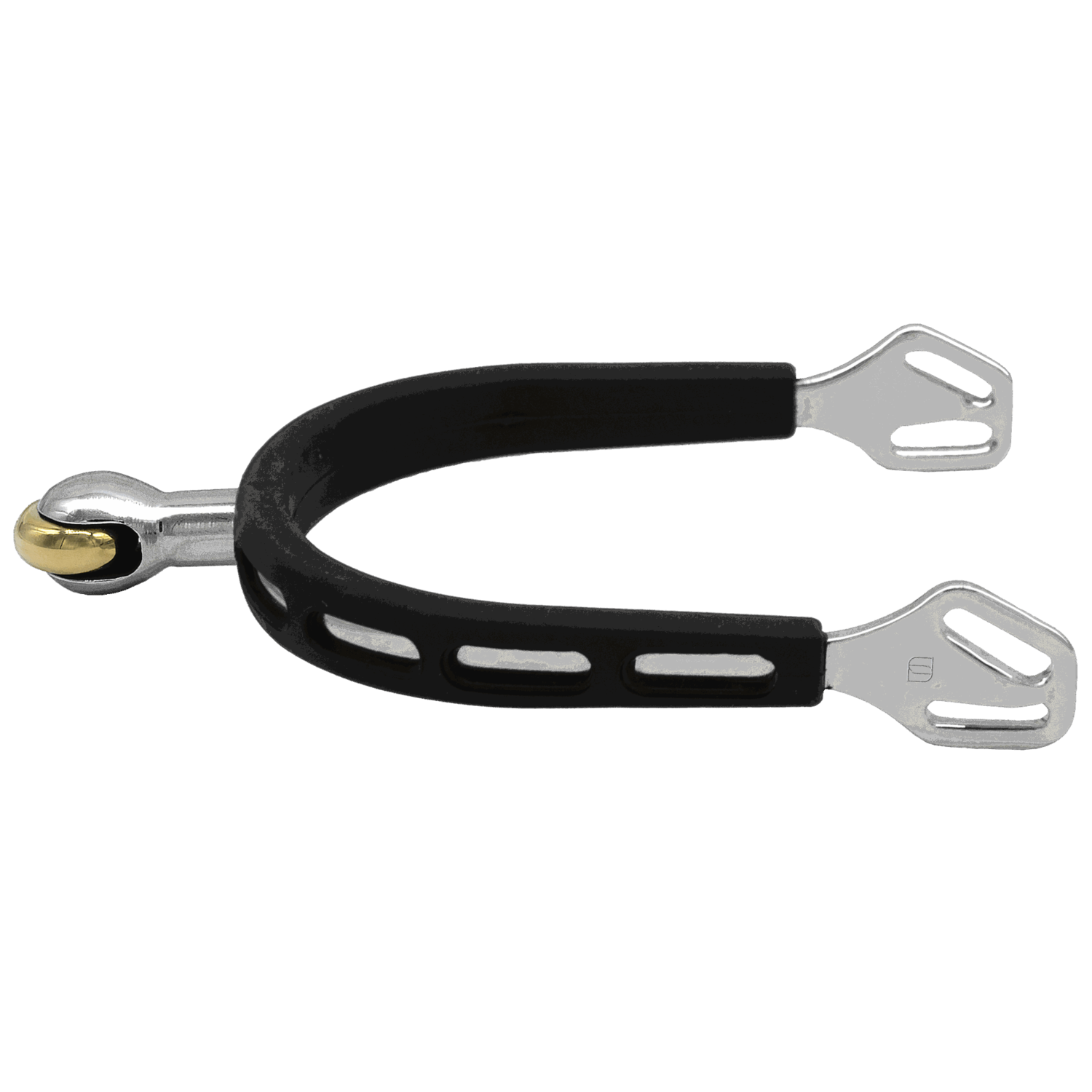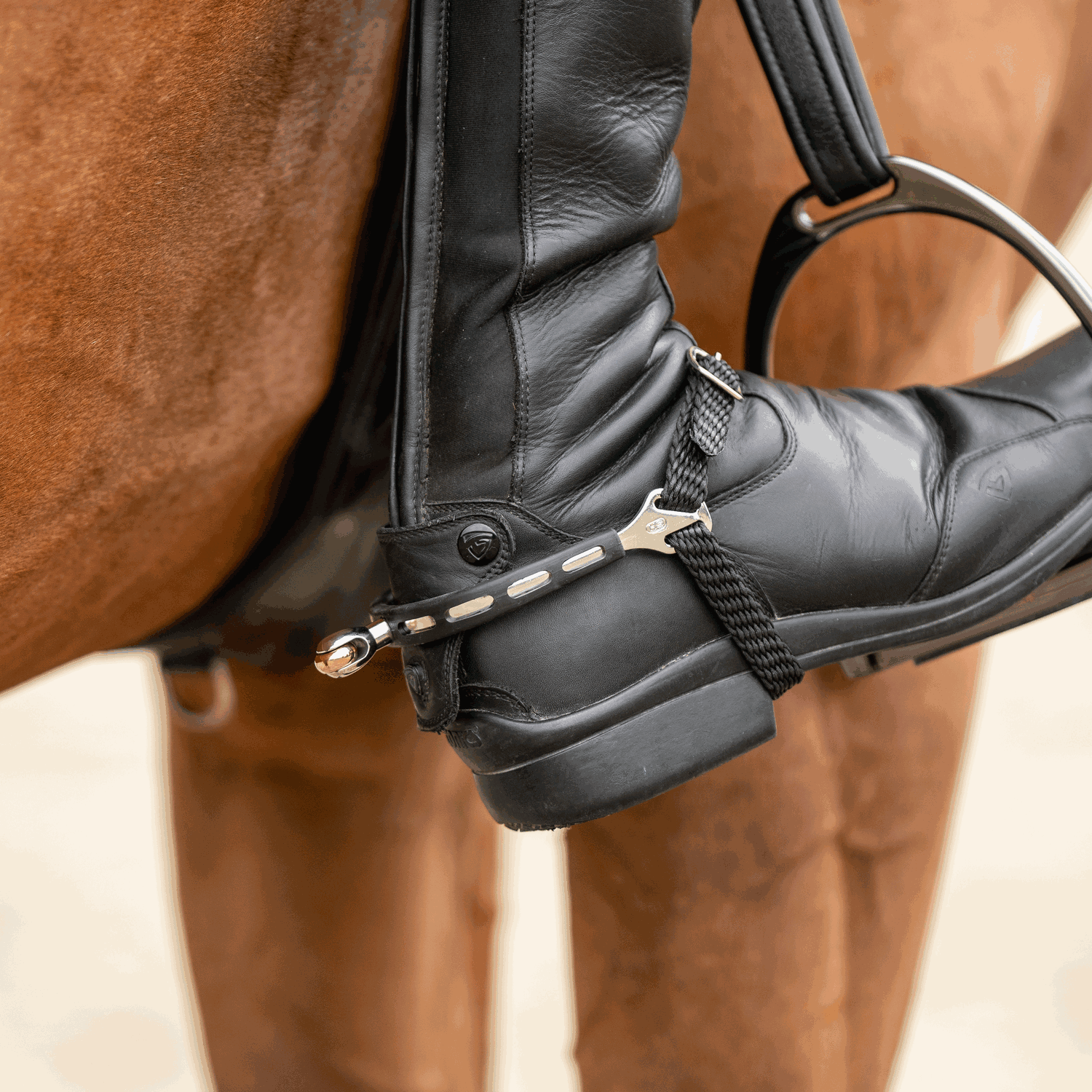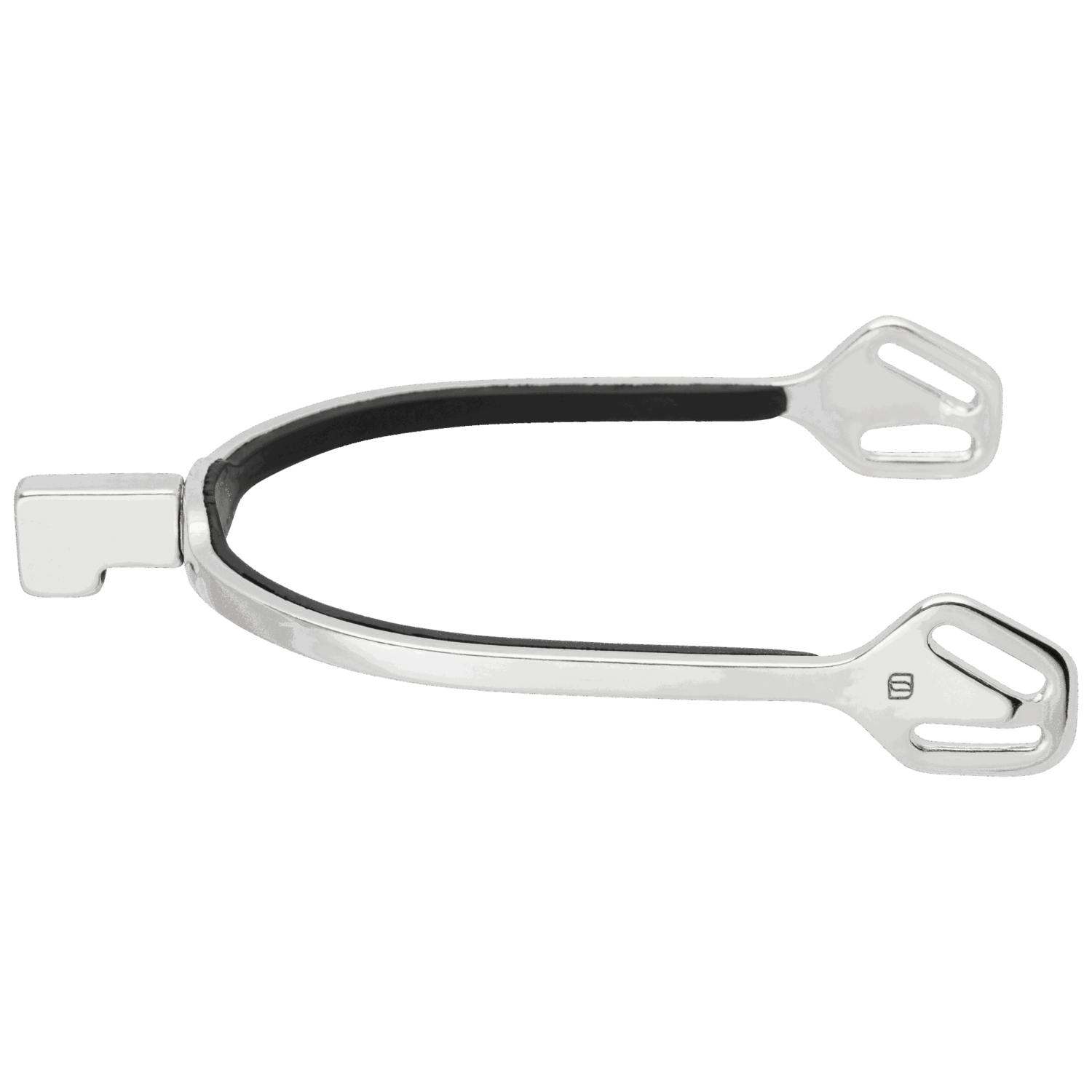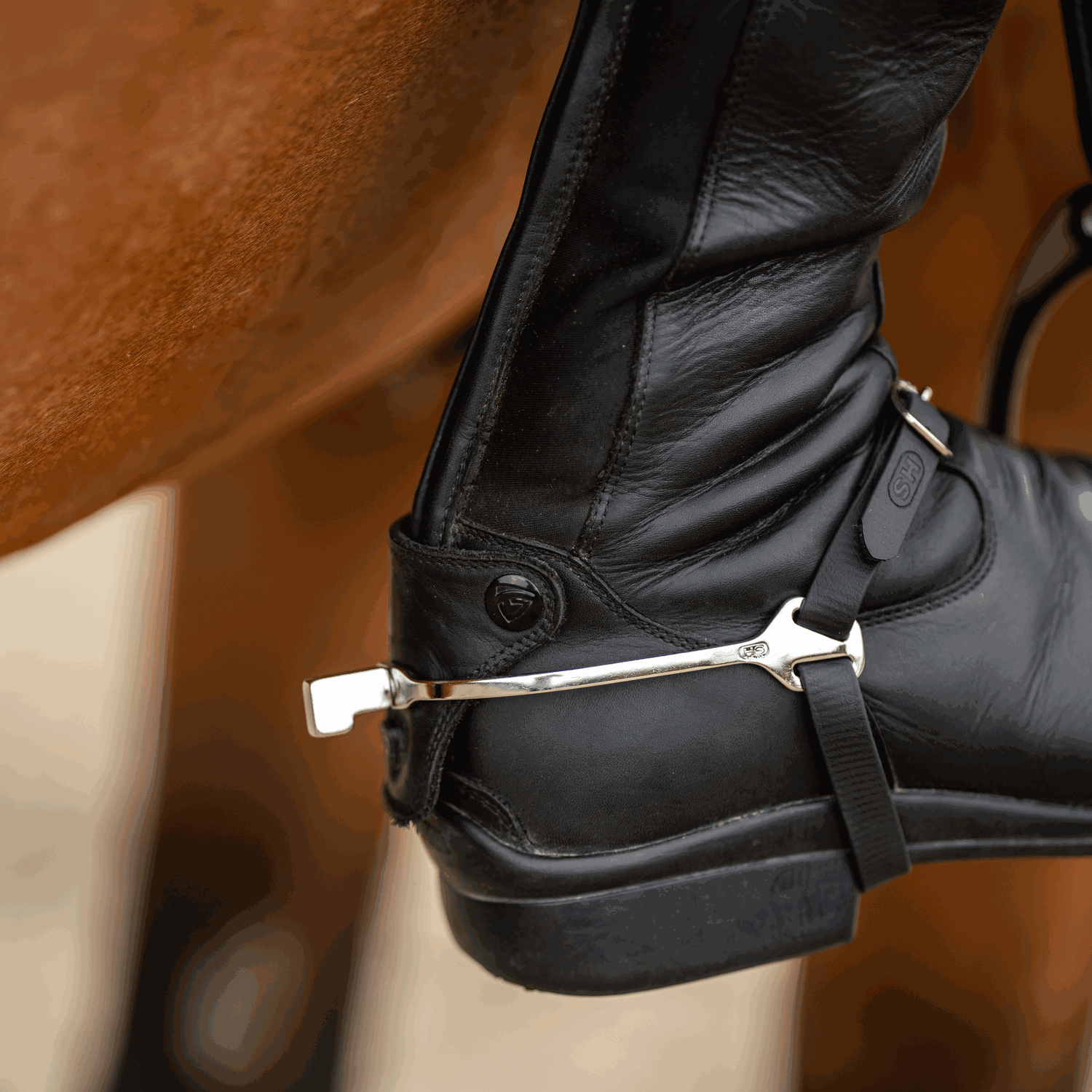Nathe 3-Ring bit 20 mm with sliding cheek and flexible Mullen Mouth
20 mm, 70 mm
Tax included. Price per Piece incl. VAT. Shipping calculated at checkout
Description
Description
At the same time, the bit offers a level of comfort that will satisfy even the most sensitive horses. Made from high quality thermoplastic, our Nathe bits are not only anti-allergenic, but also temperature resistant and dimensionally stable.
The bit guards are gentle on the corners of the mouth. The slight tongue clearance of the flexible bit with improved lateral support contributes to "fine communication".
Material & care
Material & care
How do I care for my thermoplastic dentures?
You should wash thermoplastic bits regularly and check their condition. Indentations caused by contact with the teeth, for example, can result in sharp edges on thermoplastic bits in particular, which can injure the horse.Thermoplastic
Thermoplast is a high-quality bit material that supports the satisfaction and willingness to perform of sensitive and mouth-sensitive horses. In addition to excellent compatibility, it is food-safe and free from plasticizers and solvents. The thermoplastic bits are also hypoallergenic. The smooth surface means there is no eraser effect. Thermoplastic is temperature-resistant and dimensionally stable. The steel core in the standard bits (except for size 110mm) provides additional safety. The side parts are made of high-quality stainless steel. Made in Germany. No guarantee on bite and tooth marks.Features
Features
Manufacturer information
Manufacturer information
Herm. Sprenger Metallwarenfabrik GmbH & Co. KG
Alexanderstr. 10-21
58644 Iserlohn
Deutschland
info@sprenger.de
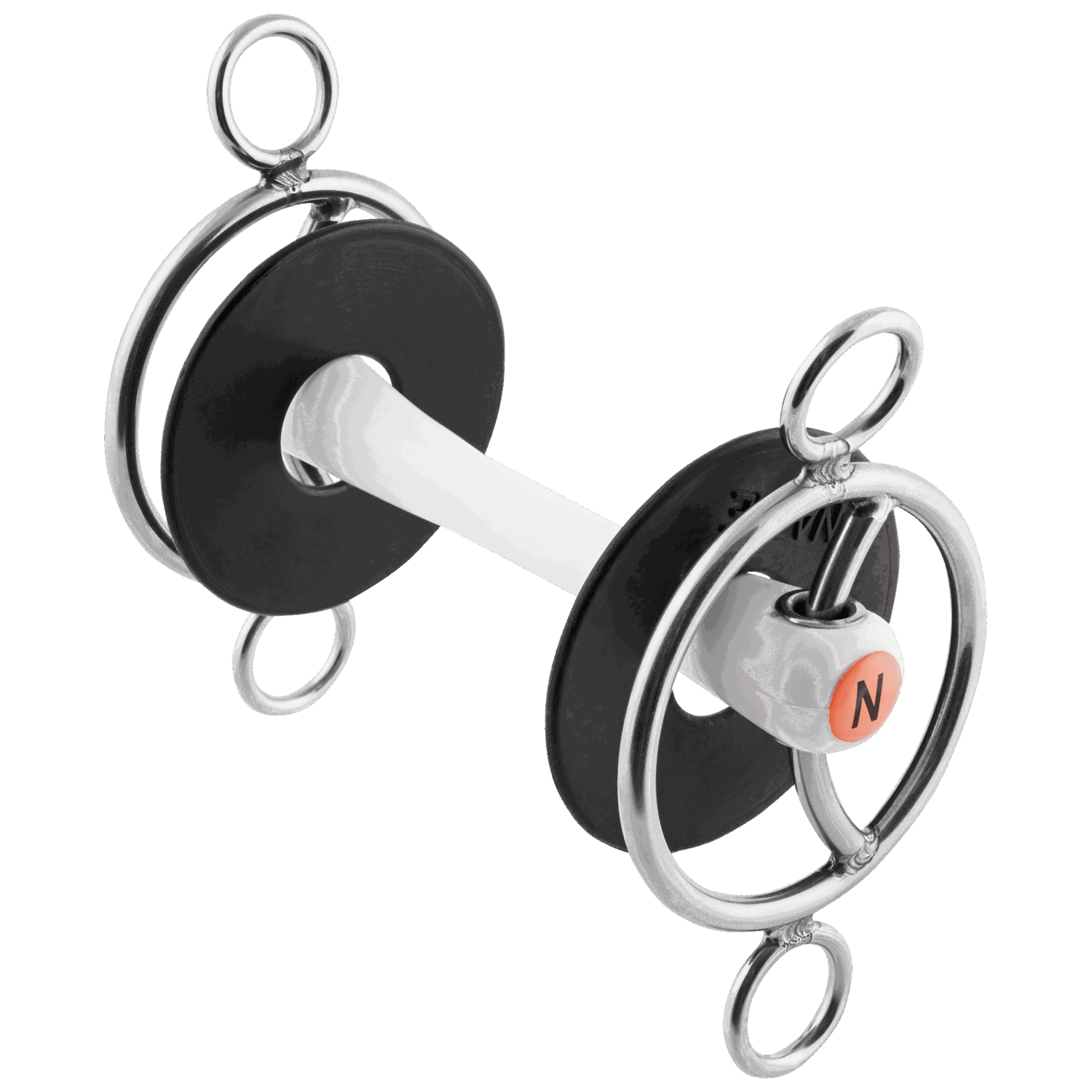
Sprenger - tradition and trust for 150 years
Where quality is created
The Sprenger brand stands for the highest quality and innovative design in equestrian sport. Sprenger has been a trusted partner for riders and horse owners worldwide for over 150 years.


